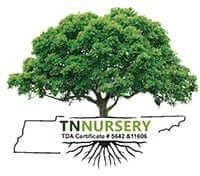
Crepe Myrtle: A Southern Icon That Thrives and Wows
Share
Crepe Myrtle is the quintessential southern flower, and for good reason. It thrives in warm weather and has a strong history in Southern culture. What’s more, it is the prettiest tree you’ll find on the market. Whether you are a seasoned gardener or a novice homeowner looking to spice up your front yard, this iconic tree belongs in your landscape.
What is a Crepe Myrtle?
The Crepe Myrtle tree (Lagerstroemia spp.) is a deciduous tree native to Southeast Asia and Northern Australia. The petals are showy and peel back as they age, earning them the common name Crepe Myrtle. They grow from midsummer through fall and come in a myriad of colors: pinks, purples, reds, and whites. The flowers range from a few feet to over 25 feet tall. There are dozens of cultivars from dwarf trees that fit in containers to towering giants.
Why gardeners love Crepe Myrtles
1. Long-Lasting Blooms
Most flowering trees produce only for a short window in the spring. Crepe Myrtles flower for up to 100 days (from June to September), providing showy blooms all summer long. Butterflies and bees are attracted to them giving you a complete ecosystem.
2. Interest Throughout the Year
Crepe Myrtles are as good in fall as they are in summer. After their flowers have faded, they still put on a show. The bark flakes off in smooth strips, showing layers of cinnamon, grey, or cream underneath. In the fall, they turn shades of red, and yellow before going dormant.
3. Drought Resistant and Low Maintenance
Once established, Crepe Myrtles are extremely drought tolerant and need little care. They make great options for those who don’t want to worry about daily watering and annual pruning.
4. Adaptability
From planting a row of the typical cultivars along the driveway to adding dwarf varieties as foundation plants, Crepe Myrtles go with any design plan. They are great as stand-alone specimens, hedges for privacy, or as focal points.
The Best Growing Conditions for Crepe Myrtles
Give your Crepe Myrtle the following growing conditions for success:
Full Sun – At least 6 hours of direct sun per day. Crepe Myrtles need full sun to bloom heavily.
Drainage – They are quite adaptable but do not like soggy soil. Amend clay soil with compost to help with drainage.
Room to Grow – Check the size of the cultivar before purchasing. Give them room to grow in all directions.
How to Plant and Care for Crepe Myrtles
1. Planting – Early spring or fall are the best times to plant. Dig a hole twice wide as the root ball but not deeper. Plant the tree and backfill the soil around it. Mulch the base of the tree to help hold moisture and keep out weeds.
2. Watering – During the first year, keep soil consistently moist until roots establish. Afterward, water when dry or very hot. Avoid overwatering it can lead to rot.
3. Fertilizing – In the spring, as new growth starts, apply a balanced slow-release fertilizer. Too much nitrogen can result in foliage growth at the expense of blooms.
4. Pruning (Do It Right) – Never trim your tree into a “stick figure.” Avoid the dreaded Crepe Murder. Instead, trim to shape and remove any crossing branches in the winter months. Trimming back the canopy encourages more flowers but maintain the tree’s natural structure.
Common Issues and How to Avoid Them
Crepe Myrtles are hardy trees but can have some issues:
Powdery Mildew – A fungus that results in a white coating on leaves. Look for mildew-resistant cultivars like ‘Natchez’ or ‘Tuscarora’ and make sure they have good air circulation.
Lack of Blooms – Most likely due to shade or over-pruning. Ensure full sun and proper pruning techniques.
Popular Crepe Myrtle Cultivars
‘Natchez’ – Tall, white-flowering tree with cinnamon bark and mildew resistance. Grows to 25 feet.
‘Tuscarora’ – Deep pink blooms and disease resistance. Grows to 20 feet.
‘Dynamite’ – Compact, red-flowering tree. Perfect for small spaces.
‘Black Diamond’ Series – Burgundy-leafed cultivars with bold flowers. The newer cultivars add to modern gardens.
‘Petite’ Series – Dwarf cultivars for containers or borders. These stay only 3-5 feet.
Crepe Myrtles in All Seasons Landscapes
Crepe Myrtles are used in many four-season landscapes. In summer, they are vibrant with flowers. In fall, their leaves change colors. In winter, the bare branches and exfoliating bark provide texture. In spring, the fresh green foliage starts the cycle again.
Combine them with other perennials and shrubs like lavender, ornamental grasses, or hydrangeas for added interest. Mulch and decorative stone draw attention to the colored bark. They go well with native wildflowers in pollinator gardens.
Final Thoughts
The Crepe Myrtle is so much more than just a pretty tree. It’s hardy, adaptable, and adds to your landscape throughout the year. From its vibrant blooms to its peeling bark to its colorful changes throughout the year, it is an investment in your landscape. From curb appeal to a private oasis, the Crepe Myrtle brings color, character, and charm to any landscape.
Plant one and you will see why it is the iconic tree of the south with nationwide appeal.
